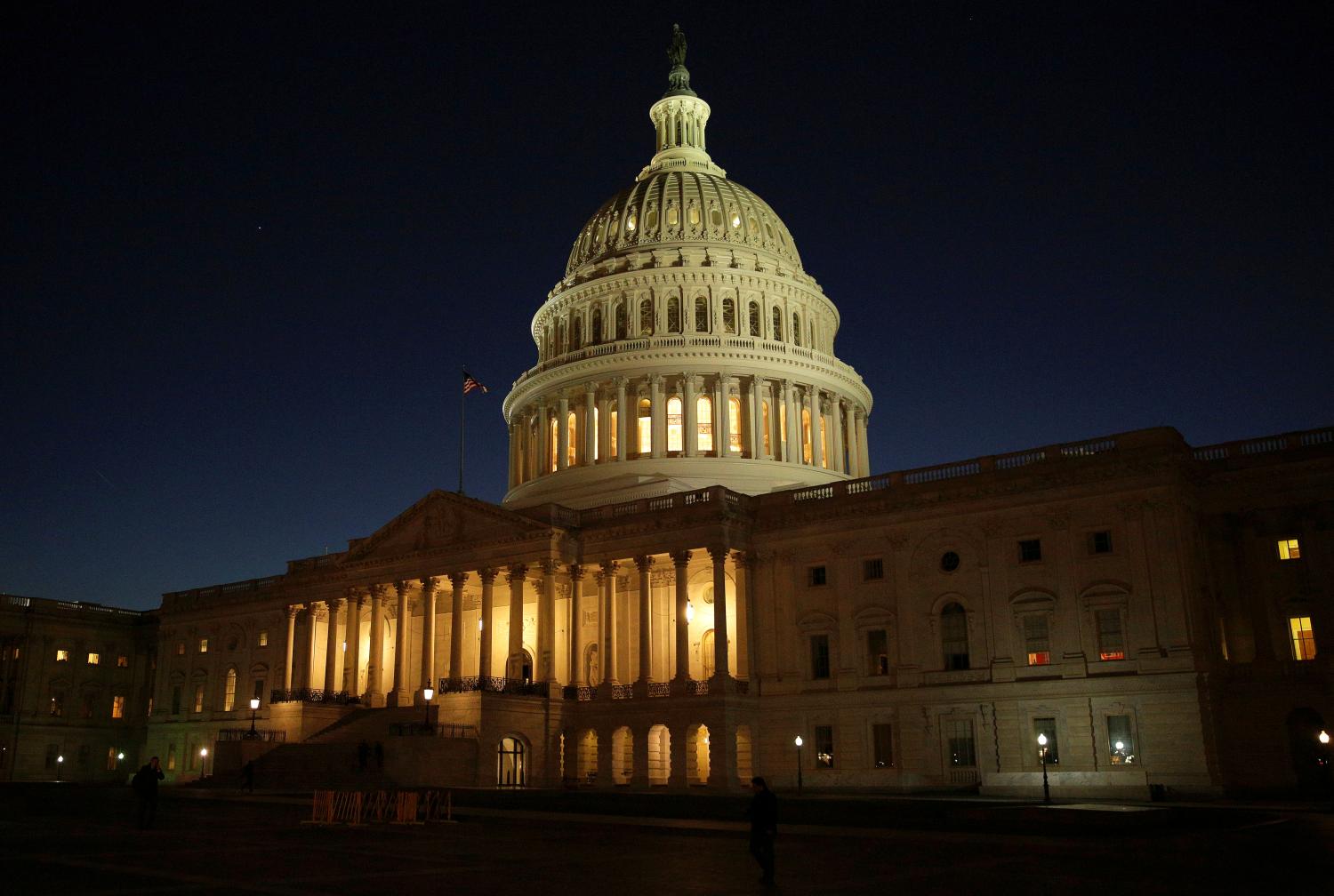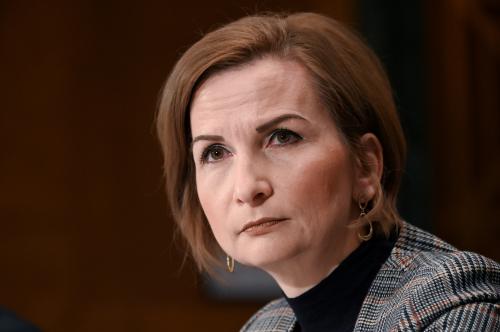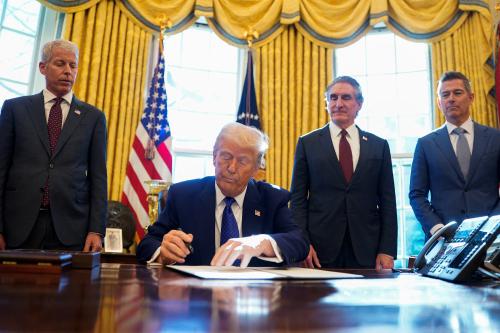The first few days of the Biden administration were replete with regulatory news. Not only did the new president direct agencies to halt and undo Trump policy changes, he charted his own course with a series of ambitious regulatory goals. Those goals included progress on individual regulations as well as a rethink of how the executive branch analyzes and reviews regulations before they go out the door. One year in, where does the Biden administration stand on regulation?
Halting the Regulatory Pipeline
On Inauguration Day, President Biden’s Chief of Staff Ron Klain issued a memo directing agencies to stop the regulatory presses until incoming political appointees had an opportunity to review pending regulations. Regulations can take years to develop, so every new administration inherits a bevy of regulatory projects in various stages of completion and ranging from not-at-all to massively controversial. A chief of staff memo is now routinely used by incoming administrations to ensure that any discretionary policy choices in the queued-up regulations are aligned with the new administration’s goals.
The public docket of the Office of Information and Regulatory Affairs (OIRA) offers one way to observe how this played out. OIRA reviews significant regulatory actions from agencies before they are released to the public, so OIRA is one of the last stops a rule makes before being published. OIRA keeps a public list of what it reviews, with dates that show when its review began and concluded. In the first 30 days of the new administration, 91% of OIRA’s concluded actions (68 out of 75) ended with the relevant agency withdrawing these actions from OIRA’s consideration. Withdrawals happen in the ordinary course, but right after a presidential transition there are large numbers of withdrawals. This is evidence of the agencies quickly adjusting their priorities to reflect new presidential direction, and the Biden administration was no exception.
Reversing Trump Policies
President Biden also coordinated with Congress as legislators overturned three Trump administration rules. Using the Congressional Review Act, Congress enacted three resolutions of disapproval. This was the first time the tool has been used successfully with a Democrat in the White House, disrupting a narrative that Democrats are unwilling to use it. Disapprovals are effective immediately when the president signs them into law and therefore offer a means of rapid rollback.
Other actions take longer. On his first day in office the president issued Executive Order (EO) 13,992, which revoked a suite of Trump executive orders including Trump’s signature regulatory policy, EO 13,771, which created the regulatory two-for-one and budget. Lesser-known EOs were revoked, too, including EOs governing the issuance (EO 13,891) and use (EO 13,892) of guidance documents.
A closer look at agency implementation of Trump’s EO 13,891 on guidance issuance and Biden’s revocation of it in EO 13,992 shows that implementation can lag well behind the presidential rollout event.
Trump’s EO 13,891 directed agencies to make their guidance documents available on a consolidated website and to write rules about their internal procedures for issuing guidance documents. The rules were to include provisions requiring agencies to write on each of its guidance documents that guidance is non-binding and to take procedural steps—including OIRA review, economic analysis, and public comment periods—prior to issuing “significant” guidance documents. After EO 13,891 was issued in October 2019, agencies began to set up their guidance websites and began to write their rules. By the end of the Trump administration, not all agencies had completed these tasks. While 36 agencies issued guidance rules, four large agencies—the Departments of State, Treasury, and Homeland Security as well as the Small Business Administration—did not issue guidance rules at all.
Biden’s revocation of EO 13,891 told the agencies not only to stop trying but to unwind what they had already done. This included removing the guidance websites, a move that was decried by those who thought the websites were a sensible approach to help the public locate agency guidance. The websites have either been taken down or seem to be in limbo. The websites, though, may have just been a casualty of an incoming administration unwilling to be restrained by guidance rules drafted by the prior administration on its way out the door. Interestingly, the rules for issuing guidance are not yet fully withdrawn, even for the agencies that were reasonably quick to issue their implementation rules in response to EO 13,891. Among the larger agencies, the Departments of Defense, Agriculture, and Commerce, as well as the Office of Personnel Management and the Equal Employment Opportunity Commission have yet to rescind their guidance rules. The more time that passes, the more one has to wonder whether they are complying with the rules in the meantime, finding a way to waive them under their own terms or simply ignoring them. The latter would be especially out of sync with the administration’s goals for restoring the rule of law.
Implementation lags are not limited to guidance policies. The American Prospect’s Executive Action Tracker for the Biden administration shows that follow-through across a range of actions, including regulatory changes, is taking some time. When it comes to rolling back a prior administration’s policies, every new administration must decide how to expend its scarce resources. After all, the hours spent undoing a prior administration’s efforts cannot be spent on one’s own regulatory priorities.
Charting a New Regulatory Course
My colleagues at the Regulatory Studies Center published a review of 2021 regulations showing that although pandemic response was a consistent theme, the Biden administration began to execute on other regulatory priorities. The Brookings Regulatory Tracker also offers a glimpse of several high-profile actions that Biden has taken so far. With the anniversary of his inauguration this week, we will continue to see analysis on Biden’s regulatory progress in different policy areas like immigration, climate, health, housing, and more. Here, I consider how the pandemic, ongoing vacancies, and the challenges of building lasting policy help explain where the Biden administration stands, one year in.
Regulating in a pandemic
In its first regulatory agenda, the Biden administration signaled its regulatory priorities in a message from Acting OIRA Administrator Sharon Block. Issued in June 2021, before the arrival of the Delta and Omicron variants of SARS-CoV-2, the message was focused on economic recovery from the pandemic and a host of issues like drinking water safety, wages, racial justice, and the climate crisis. The pandemic, though, continues to sop up an enormous amount of regulatory capability within the government.
Emblematic of this work is a suite of actions taken to encourage vaccination and masking policies in different settings. Many of these actions were immediately challenged in court, two of which were the subject of recent decisions from the Supreme Court. No president would choose to have a pandemic strike during his presidency, and all of this pandemic response is undoubtedly a distraction from what the Biden administration would prefer to be spending its time on.
On the other hand, a bright spot is that the administration is signaling plans to continue certain pandemic flexibilities that have had large social benefits. One example is regulatory flexibilities that help people get access to medication-assisted treatment for opioid use disorder. In particular, the administration plans to make it possible to begin treatment after a telemedicine visit instead of an in-person visit. Another rule will make it easier for patients to take home supplies of methadone rather than having to go to a clinic every day. These are sensible reforms borne out of the pandemic, but the administration still needs to propose and finalize them. An alternative to rulemaking is legislation. Congress could enact targeted reforms or a package that addresses a number of pre-pandemic regulations that the Competitive Enterprise Institute has described as “never needed.” Given the number of different regulatory flexibilities that agencies have provided in the pandemic, a careful assessment could help construct a package that learns from the pandemic but avoids going too far.
Vacancies an Ongoing Concern
Progress, or the lack thereof, on regulatory actions might also be a function of lingering vacancies. One notable vacancy is the administrator of OIRA. Five presidents have had the opportunity to nominate an OIRA administrator at the beginning of his presidency. All but Biden did so within the first four months of their first term, and all saw their nominees confirmed by the first summer. OIRA is part of the Office of Management and Budget (OMB), which has also been without a confirmed director since Biden’s first nominee withdrew under pressure. Because the OMB director is typically one of the first confirmed officials in a new administration and others in OMB tend to follow, this may have slowed the naming of an OIRA nominee.
The strength of the team of political appointees at OIRA has certainly helped the administration make progress despite not having a confirmed, or even nominated, administrator. In November 2021 Biden nominated Senate-confirmed Deputy Director Shalanda Young to be the OMB director, and her nomination is pending. With respect to OIRA, it’s now been one year, with no public movement on a nominee. With a one-vote margin in the Senate and stark differences about the proper role of OIRA, a nominee may face a challenging confirmation process.
Modernizing Regulatory Review
On the first day of his administration, President Biden issued a presidential memorandum entitled “Modernizing Regulatory Review.” The memo directed OMB to make recommendations to update the way the executive branch evaluates regulatory ideas and responded to criticism from the left about the role of centralized review and regulatory analysis.
Since then OMB has issued a report on methods to assess equity in policy decisions, which was not exclusively framed as a regulatory matter but which certainly has important overlaps. Otherwise, OMB has not shared much publicly about its implementation of the memo. In the fall, a coalition of progressive groups sent a letter to the administration urging more action.
It’s understandable that implementing the memo is taking some time. The memo’s policy goals are ambitious and challenging, and achieving them in a lasting way will take careful execution. In an interview with Ezra Klein, the president and CEO of the Roosevelt Institute Felicia Wong was candid about the political moment facing progressive economic policy officials in the Biden administration. Her comments are worth quoting at length:
I think it’s important to remember that the conservative economists, the neoliberals, they had 30 years between the building of their ideas and their academic bastions — that was in the ’40s and ’50s — and the building of their political movement in the ’60s and the ’70s, and then their taking of the presidency and the federal government in the ’80s. And what is really important to understand about our politics at this moment is that progressives, or the center left, or whatever coalition you want to talk about that is not on the right, we do not have the luxury of time. We have to figure it all out all at once.
These ideas that we’ve been talking about are pretty new. They really have come about in the academy, in the mainstream academy, only over the last 10 years. And the institutions, we’ve been naming people who are in these institutions who are progressive. But these institutions are massive, and the institutions need a tremendous amount of change in order to be able to actually hold all of these political advances, these new ideas, and to execute on them, to make them a reality.
So we’ve been trying to figure out the ideas, the politics, the policies, the institutions all at once. We’ve imagined this new world, but it’s pretty new. It’s pretty nascent, and we don’t know how to handle either the politics or, frankly, the institution building.
This helps explain part of why it might be hard to detect movement from the outside; because policy officials are trying to implement policy as they develop it. As a recent example of what can go wrong if the footings of sweeping, new policy are not sound, the Trump administration’s signature initiative, its regulatory budget, was executed in such a manner that it was inevitably revoked on day one of the Biden administration. At least until the Trump years, regulatory policy was quite bipartisan for several decades, with political changes only on the margins. To build policy that can last, the Biden administration cannot just go for quick wins.
Making Lasting Change
With respect to what it takes to build long-term regulatory policy, consider Circular A-4, the government’s cookbook for economic analysis of proposed rules. The modernizing memo directs OMB to produce recommendations to update this circular, which has not been updated since its release in 2003 and which many agree is ripe for updating.
Circulars are special in the government because, according to Circular A-1, they are for policies with “continuing effect” as opposed to “one-time” or “transitory” policies. Circular A-4’s origin story is lengthy, spanning multiple presidencies. Following some years of internal development, OMB proposed guidance in its Regulatory Program in 1988, taking comments on it and finalizing it in its 1990 Regulatory Program. After that, OMB issued guidance following “an exhaustive two-year effort by the group to describe ‘best practices’ for preparing the economic analysis of a significant regulatory action called for by the [EO 12,866]. This included external peer review. In October 1999, OMB circulated revised guidance to agencies for review, finalizing revised guidance in 2000 as required by statute. OMB issued proposed guidelines for public comment in February 2003, conducted interagency and external peer review, and then issued final guidance in the form of Circular A-4 later that same year.
It surely should not require two decades to make any changes at all to Circular A-4. But putting a policy through a careful, transparent process has benefits including stability. In the context of Circular A-4, stability is particularly welcome because the regulatory process can take years and span multiple presidencies. Sweeping changes to the guidelines for regulatory analysis with every change in administration would set agencies back over and over. To make Circular A-4 changes stick, some combination of internal development, interagency review, external peer review, and public comment may help firm up the basis for the changes. With cornerstone policies like Circular A-4, an extended development process is worth the trouble if it yields a thoughtful, inclusive update that will be durable. Trump took short cuts with regulatory policy, and they didn’t translate to lasting change.
In sum, year one of the Biden administration involved halting and rolling back Trump administration policies, as well as making progress on the new administration’s regulatory goals and policies. Because regulatory policy takes time, years two and beyond will establish how much of Biden’s own agenda gets implemented, and how much of it can last.
The Brookings Institution is committed to quality, independence, and impact.
We are supported by a diverse array of funders. In line with our values and policies, each Brookings publication represents the sole views of its author(s).








Commentary
An overview of Biden’s first regulatory year
January 20, 2022